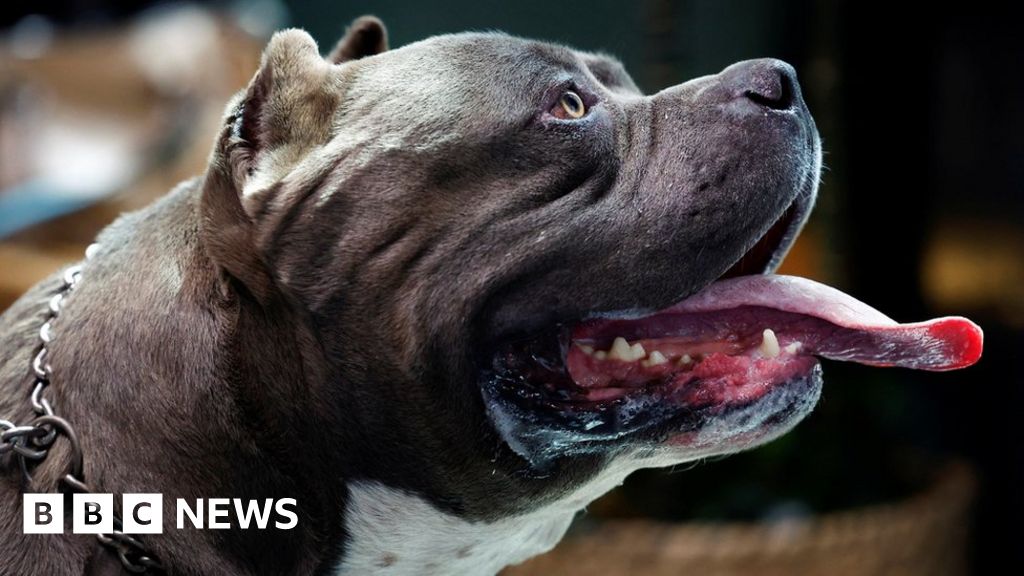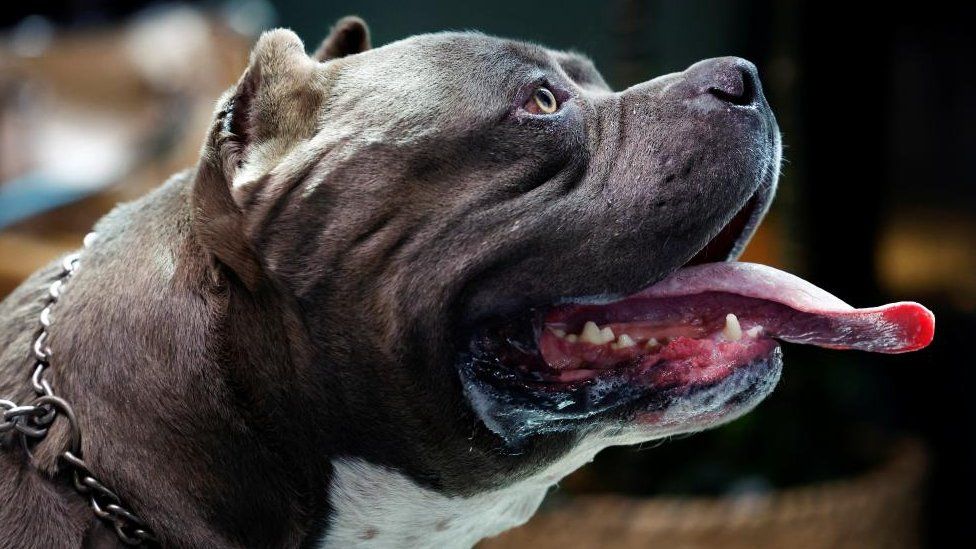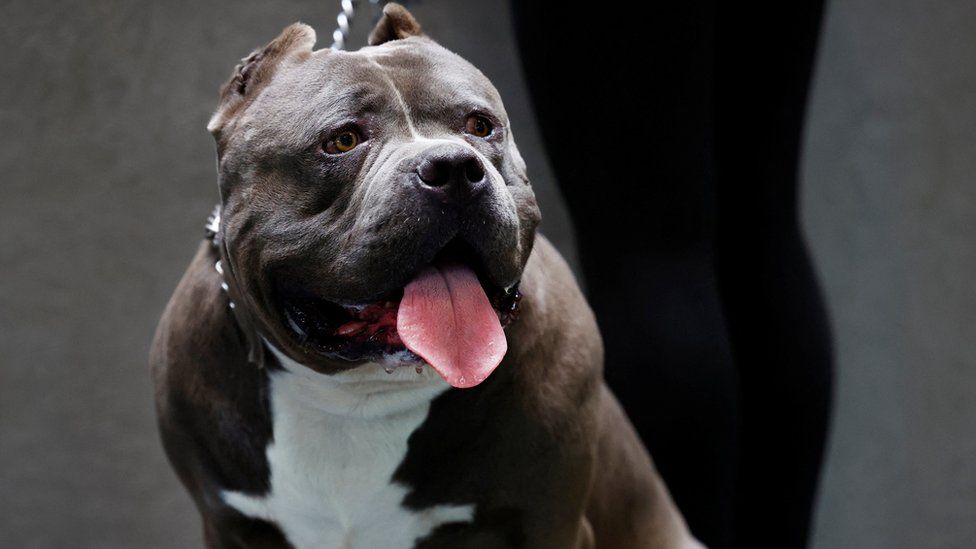
A man died after a suspected attack by an American bully XL in Walsall on Thursday. And an 11-year-old girl, along with two men, were attacked by an American bully XL in Bordesley Green, Birmingham, on Saturday.
The prime minister said the dogs would be banned by the end of the year under a law that applies in England, Wales and Scotland – once work had been done to define the breed.
Owners, however, insist that despite their fearsome appearance and build, the dogs make loveable household pets.
What is the American bully?
American bullies are said to have originated in the US in the late 1980s, when American pit bull terriers and American Staffordshire terriers were crossed.
There are four variations: standard, pocket, classic and XL.
The XL can weigh more than nine stone (60kg) and are strong enough to overpower an adult.
The American bully is regarded as a specific breed in the US. However it is not recognised as such by the main British dog associations, such as the Kennel Club.
Bully Watch, a group of London-based policy experts, told BBC News the breed first appeared in the UK “around 2014 or 2015”, and that numbers grew rapidly during the pandemic.
The United Kennel Club in the US says that an American bully “makes an excellent family dog”.
“Despite its powerful appearance their demeanour is gentle and friendly,” it says, but also notes that “dog aggression is characteristic of this breed”.
What happens when a dog breed is banned?
It is unclear exactly how a ban on XL bullies would work. Downing Street said on Friday there had been “no final decision” on what will happen to people who already own XL bullies when they are banned.
Downing Street was not able to say whether XL bully dogs would be destroyed.
The introduction of the Dangerous Dogs Act 1991 saw the breeding, selling or gifting of banned breeds unless going abroad prohibited, while the dogs had to be muzzled and on a lead when in public.
There was an “amnesty period” to allow owners to keep them under certain conditions. When that came to an end, owning one became an offence unless certain exemptions were met.
Those included dogs being castrated or spayed, microchipped and tattooed, with owners also required to have insurance.
Four breeds have been banned under the Dangerous Dogs Act 1991: the American pit bull terrier, the Japanese tosa, the Dogo Argentinos and the Fila Brazileiro.
The act gives the government the power to ban any breed appearing “to be bred for fighting or to have the characteristics of a type bred for that purpose”.
The American bully XL is not specifically recognised by the Kennel Club, and banning it under existing legislation could prove challenging as the breed is extremely difficult to explicitly define.
Fears had previously been raised suggesting that outlawing it would inadvertently outlaw a range of other dogs.
A government source said the Department for Farming, Environment and Rural Affairs had been working on plans to outlaw the American bully XL, with experts being consulted to define the breed.
How dangerous is the American bully?
Apart from the two most recent incidents, American bullies have been involved in several high-profile attacks.
In April, a 65-year-old grandmother was killed after she tried to break up a fight between her two American bullies at her home in Liverpool. And last year, a 17-month-old toddler was mauled to death in her own home by one of the dogs in St Helens, just a week after her family had bought it.
In 2021, 10-year-old Jack Lis died from severe neck and head injuries after he was attacked by an American bully XL in Caerphilly. His mother, Emma Whitfield, has called for the dogs to be banned.
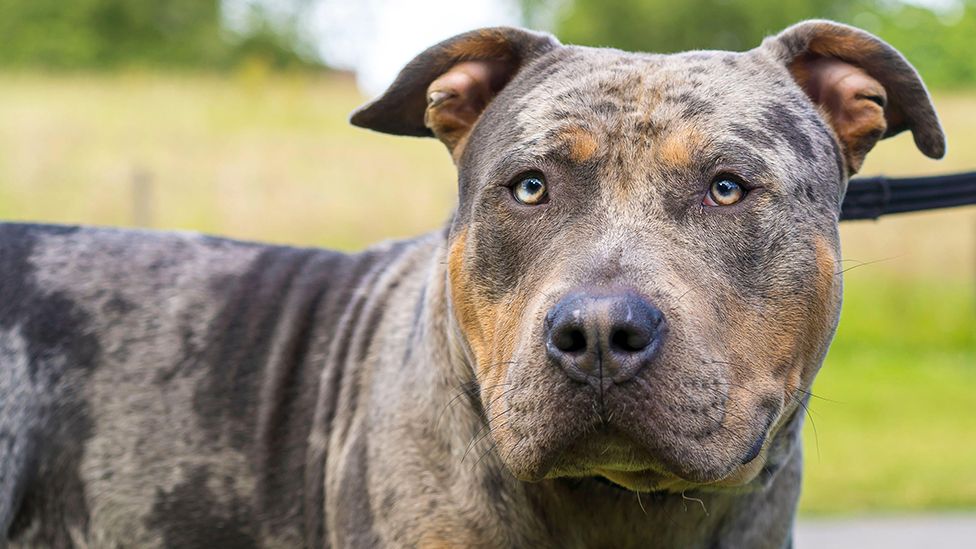
Richard Baker, an NHS consultant surgeon, told BBC News that because the dog has “such powerful jaws, the wounds are worse compared to other breeds”.
“In [American bullies] it’s a crushing or a tearing injury,” he said. “Once they grip they don’t let go. That kind of injury is more damaging than smaller dogs.”
He said that American bullies break bones, shred skin and damage nerves.
A study published in the Public Health journal showed there was a sudden spike in deaths from dog attacks in England and Wales in 2022 – 10, compared to an average of three in previous years.
Bully Watch said its data collected from press reports showed the American bully had been linked to 14 deaths since 2021. The BBC has not independently verified that figure.
But other experts say it is wrong to use such data to draw conclusions about a single breed.
Why do some charities oppose a ban?
The Dog Control Coalition – which includes Battersea, Blue Cross, the Dogs Trust, BVA, the Scottish SPCA, the Kennel Club and Hope Rescue – told the BBC that breed-specific bans had been proven to be ineffective.
“Thirty-two years of the Dangerous Dogs Act, which has focused on banning specific types, has coincided with a troubling increase in dog bites and fatalities,” it said in a statement. “This approach simply isn’t working.”
Some owners insist the breed is no more dangerous than any other dog.
Charlotte Towner said of her American bully XL Coco: “She’s just the sloppiest, dopiest dog I’ve ever owned. She’s great with other people, her only downside is she gets excited when she sees people.”
However, Mr Baker, the NHS consultant surgeon who has dealt with the aftermath of dog attacks, has a different view.
“I can’t see any reason why a responsible person would want to own a dog that is bred for violence,” he said. “Nobody needs a vicious, dangerous animal.”
Who buys American bullies, and is there a link to crime?
No expert spoken to by the BBC disputed that the American bully is increasing in popularity.
Anecdotal evidence meanwhile suggests that they are favoured by criminal gangs because of their strength and intimidating features.
A BBC Panorama undercover investigation explored the link between organised crime and their breeding earlier this year.
Ian Muttitt, a chief inspector with the RSPCA’s Special Operations Unit, said at the time that organised crime had become increasingly involved in extreme dog breeding over the past five years.
He told the BBC sales in themselves were lucrative, and could also be used to launder money.
In written evidence to a parliamentary inquiry, the National Police Chiefs’ Council said oversized dogs continued to be used as “status symbols” among criminals.
Additional reporting by Sean Seddon
Related Topics
-
-
24 minutes ago
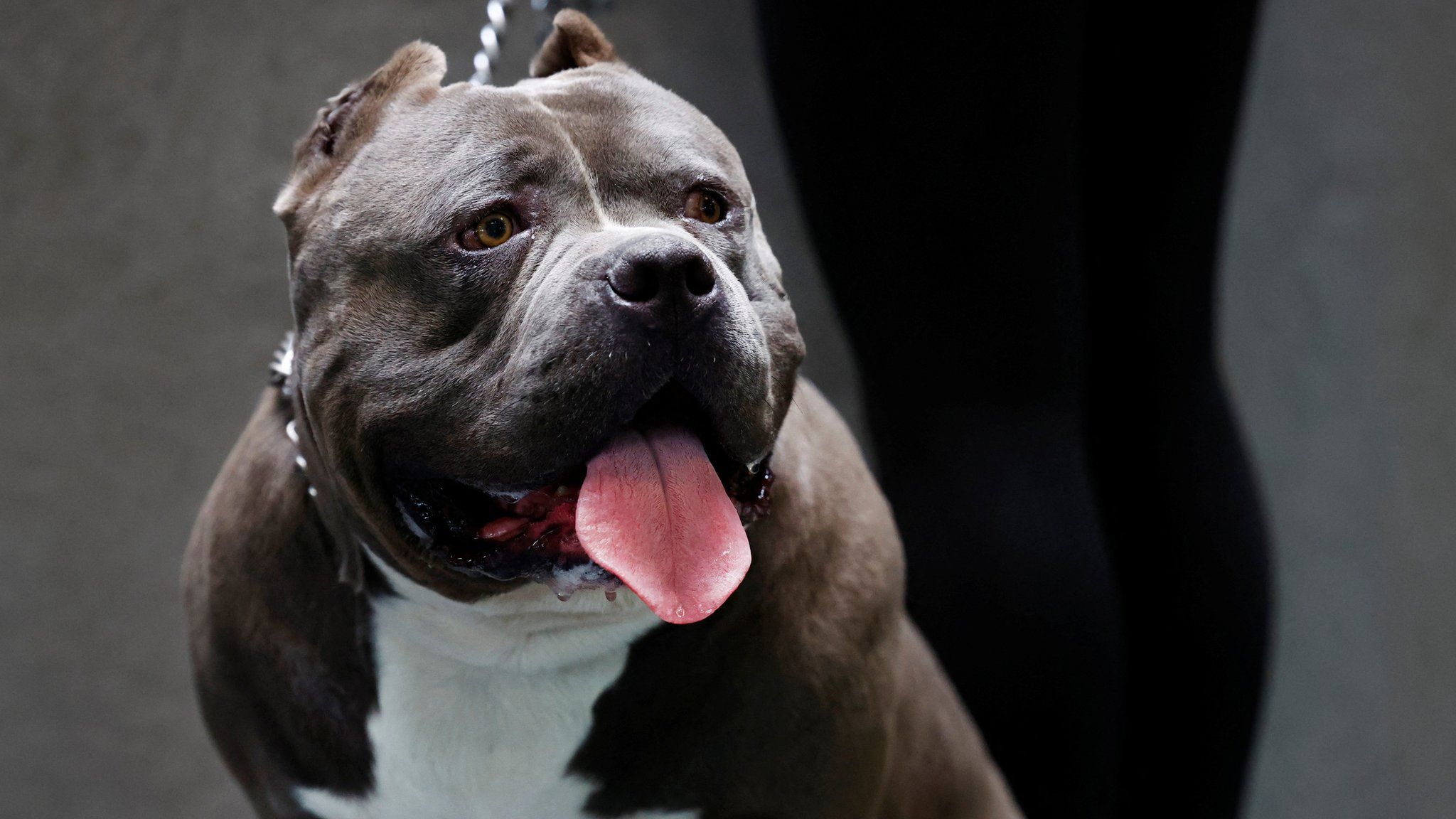
-
